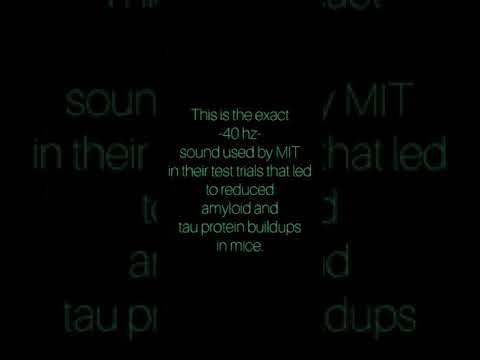Also see the guide I wrote at https://forum.longevitybase.org/t/guide-to-living-longer-alex-k-chen - almost everything here (including healthy diet) is relevant for mindspan. Will highlight more salient mindspan-related content here. Keep in mind mice mostly die of cancer, not brain diseases (cancer and Alzheimer’s are also ANTIcorrelated), so this reduces some of translatability of mouse models to brain aging.
- keep blood glucose/insulin as low as you can and avoid glucose spikes [of ANY of the interventions, this has the largest effect size]. Reduce non-MUFA calories when possible. SGLT2 inhibitors help - https://www.biorxiv.org/content/10.1101/2022.01.27.478017v1?ct= . High “Normal” Blood Glucose Is Associated with Decreased Brain Volume and Cognitive Performance in the 60s: The PATH through Life Study - PMC . Neuroprotective Effect of SGLT2 Inhibitors - PMC . The brain has SGLT2 receptors so they help inhibit excess glucose from entering the brain.
- read Preston Estep’s book Mindspan. Low-iron helps (being veg*n is easiest way). Blood donations reduce iron load, as do some chelators, as (possibly) does taking saunas.
- semaglutide agonists like dulaglutide - https://www.youtube.com/watch?v=pJ1zqf4AsiA
- Which Epigenetic Clock Should I Use? A case study on clock limitations – TruDiagnostic™ (reducing calorie consumption by 11% really reduces DunedinPACE aging - the relevant metric for brain mass)
- AVOID VIRUSES: What are some endogeneous (latent) cellular viruses that could accelerate aging/produce effects later on in life? [virome/viral load => dementia] - General Health and Longevity - CR Society Forum . Vaccination is SO important
- rapamycin (practically anything pro-longevity helps with brain-longevity, though the brain is more sensitive to some interventions than avg lifespan is). You want rapamycin to cross the BBB (this is hard, except at higher doses). Some are trying to develop special capsule structures that “can be absorbed into the BBB” (similarly, some are trying to develop antioxidant delivery methods into the BBB, some via ultrasound)
- THC/cannabinoids can clear up amyloid AND they can induce sleep/deep sleep - get one of the special CBN-based formulations for it (Cannabinoids remove plaque-forming Alzheimer’s proteins from brain cells - Salk Institute for Biological Studies ; Active ingredient in cannabis protects aging brain cells - Salk Institute for Biological Studies ). Try non-psychoactive oral tinctures or edibles. I do not recommend full trippy doses (beyond doing it once just to see how your brain responds). https://www.getsava.com/shop/kikoko-sleep-mints is my favorite formulation (has melatonin too!).
- https://www.longevity.technology/can-active-ingredient-in-cannabis-protect-against-brain-aging
- get regular MRI brain scans (https://longevity.technology/news/brain-trust-our-product-review-of-brainkey/amp say as little as $250/year) and track your rate of decline (with interventions). Check for white matter hyperintensities. https://academic.oup.com/brain/advance-article/doi/10.1093/brain/awac493/6960736 . Get DTI MRI if you can (this is hard unless you were in the human connectome project)
- neurofeedback for cognitive control can increase the ratio of “high-frequency” to “low-frequency” brainwaves and potentially slow brain aging in a way similar to meditation. It has to be the right modality and there are no high-quality studies to measure this. There is a HUGE amount of independent projects done on measuring brain waves/neurofeedback (see brainmaster) but so much of it is uncoordinated and most who have neurofeedback technology are still not deeply in tune with “the plot” (correlated with being part of elite workflows), whether the plot is driven by AI or by longevity.
- supplemental melatonin. See Doris Loh and Antioxidants | Free Full-Text | Melatonin: Regulation of Biomolecular Condensates in Neurodegenerative Disorders . https://link.springer.com/article/10.1007/s10522-022-10006-x
- Breaking Alzheimer's - Dr. Goodenowe Perpetual Health
- taurine - https://www.youtube.com/watch?v=AkabsRp91qo
- get opencures blood tests to test for ethanolamine plasmalogens, choline, Sphingomyelin, ceramides. Try to increase Sphingomyelin and decrease ceramides. MAKE SURE plasmalogens are high (the effect sizes are unreal)
- put air purifiers in all your rooms - there is no minimum safe dose of air pollution. EVEN SEATTLE-LEVELS OF POLLUTION INCREASE DEMENTIA RISK - https://neurosciencenews.com/fine-particulate-air-pollution-dementia-19058
- https://www.pnas.org/content/117/25/13856 . Do not live within 300 yards of a major roadway (esp one w/diesel), or downtown (or get air purifiers to reduce air pollution below 10 ug/mm^3
- resistance training. Some cardio/HIIT helps too.
- RTS games (they probably won’t slow down basal aging but like “more years of education” (a VERY common brain-protective finding even though it’s a cultural artifact that does not apply for unschoolers), probably makes the brain more robust against neurodegeneration. See this study on Rise of Nations - Can Training in a Real-Time Strategy Videogame Attenuate Cognitive Decline in Older Adults? - PMC . I would recommend Homeworld, Sins of a Solar Empire, Supreme Commander:FA, Starcraft II, XCOM2. AOE2 now has a decent playerbase of non-youngest players. 1v1s are scarier but force you to constantly stay attentive
- avoid organophosphate/organochlorine pesticides. Cause exploration prize: organophosphate pesticides and other neurotoxicants — EA Forum shows they decrease IQs (yes even in adults). Use EWG to find most produce (it labels which pesticides are neurotoxins). In particular, fruits of Rosea family should be bought organically. Spinach/strawberries/apples/Mexican tomatoes/cucumbers/red peppers have high pesticide residue. Processing (via canning/pickling) reduces pesticide residue.
- selegiline - Deprenyl - Anti-Aging Drug Proven Effective in Dogs - #3 by Vlasko - longevity - Rapamycin Longevity News . Idk if it’s mostly basal ganglia or also PFC
- Consumption of coffee and tea and risk of developing stroke, dementia, and poststroke dementia: A cohort study in the UK Biobank . Don’t drink more than 6 cups of coffee each day. combination of tea and coffee was associated with a lower risk of poststroke dementia, with the lowest risk of incident poststroke dementia at a daily consumption level of 3 to 6 cups of coffee and tea (HR, 0.52)
- Amazon indigenous group's lifestyle may hold a key to slowing down aging | ScienceDaily
- Eating mushrooms may reduce the risk of cognitive decline | ScienceDaily
- supplemental melatonin (see Doris Loh), ESP when taking amphetamine. It does not interfere with endogenous production. Massive doses can be great
- https://www.frontiersin.org/articles/10.3389/fnagi.2014.00076/full (the more calm/less active your brain is, the better). Try to get a qeeg to see if your brain is unnecessarily noisy. Meditation also slows brain decline (the studies aren’t great and don’t adjust for intensity of meditation). Stephen Zerfas has a startup targeted at neurofeedback-enhanced jhanas/meditation => this is the most robust way of cognitive control + calming the noise in the brain down so neurons don’t unnecessarily fire so much
- minimize unnecessary neuron firing (older brains have a lot of it, as shown by their “less steep” 1/f power spectra falloff). This is also why REST calms overprotective brains (https://www.quantamagazine.org/longevity-linked-to-proteins-that-calm-overexcited-neurons-20191126/ ), why lithium is protective, why non-antipsychotic treatments for both bipolar and epilepsy are also often neuroprotective
- https://www.quora.com/What-are-some-ways-to-prevent-mental-decay-as-you-age/answers/729292
- https://www.frontiersin.org/articles/10.3389/fnagi.2019.00069/full => get RNFL Thickness measurements from OCT scans of your retina/eye. Eye health is the easiest-to-measure window into brain health. There is low-quality evidence that cannabinoids might slow decrease in RNFL thickness with age.
- avoid alcohol - More alcohol, less brain: Association begins with an average of just one drink a day | ScienceDaily . Even 1 glass/day (or even a few glasses a week) accelerates brain shrinkage (even if it also reduces epigenetic age). There are new “hangover-blocker” chemicals (eg DHM detox) that may block acetaldehyde production.
- Plasmalogen Deficiency, Dementia, and Death with Dr. Dayan Goodenowe - Dr. Kara Fitzgerald
- note different parts of the brain transcriptionally age at different rates (see Dr. Hahn @ Wyss-Corey). The midbrain (esp corpus calloseum) tends to transcriptionally age faster (though Hahn’s research didn’t look at correlations with how the PFC tends to shrink the most first).
- REDUCE HOMOCYSTEINE (try betaine + b12, ESP if you’re taking metformin, and try creatine). keep folate high (https://www.frontiersin.org/articles/10.3389/fnins.2021.661198/full ). This can be very tricky (Mike Lustgarten is still trying [and failing] to find ways]
- lutein/zeaxanthin + other long-chain carotenoids (also astaxanthin - Astaxanthin as a Putative Geroprotector: Molecular Basis and Focus on Brain Aging - PMC ). Lutein accumulates in subcellular membranes of brain regions in adult rhesus macaques: Relationship to DHA oxidation products - PMC
- green tea (https://www.sciencedirect.com/science/article/pii/S0167494321001175 ). Try loose-leaf organic if you can (tea bags often have microplastics or bleaching agents, and pesticide contamination in non-organic is high). Google Books
- An Hour of Light and Sound a Day Might Keep Alzheimer's at Bay | Scientific American . HOWEVER, most monitor/smartphone refresh rates are not high enough to reproduce the subtlety of 40-60Hz.
- flavonols - High intake of dietary flavonols tied to lower risk of Alzheimer's dementia . The Rush University study on dementia has SOOO much information
- keep high omega-3 DHA (wellnessfx.com for the omega-3 blood tests). DHA more important than EPA
- keep blood pressure below 115/75
- saunas - https://twitter.com/foundmyfitness/status/1430938112369197061 - "Heat shock proteins play a preventative role in neurodegenerative diseases and sauna use is associated with a 66% lower risk of Alzheimer’s "
- avoid pouring hot water used for coffee/tea in “paper cups” (https://www.nist.gov/news-events/news/2022/04/nist-study-shows-everyday-plastic-products-release-trillions-microscopic ) - nanoplastics can uniquely get through the blood brain barrier (The plastic brain: neurotoxicity of micro- and nanoplastics | Particle and Fibre Toxicology | Full Text )
- LITHIUM. Effects of lithium on oxidative stress parameters in healthy subjects - PMC. Study suggests lithium may decrease risk of developing dementia. It does not inrease lifespan in mice, but dementia is not currently the leading cause of death (it more becomes it when you reduce cancer/heart disease => and these are not too hard to decrease)
- ** Study shows inhaled toxic particles take direct route from lungs to brain **
- ketogenic diets (https://archive.ph/WRRrl ) or just use exogenous ketone esters. The evidence is still early, but there could be a large effect size (we need more publications). Neuroketotherapeutics: A modern review of a century-old therapy - PubMed
- get a sleep study to test for apnea (apnea can accelerate brain decline)
- HIIT, run from pt A to point B (to pt of exhaustion). Intensity of exercise matters more than hours put in. https://newatlas.com/health-wellbeing/one-minute-activity-bursts-longer-life/?fbclid=IwAR1LglllDIaqkua1uoYuifW2tq_DztzuT9moLMghk7hLA6RpoyOByH6zlDk Same for weight-lifting [also impt for like stimulating blood vessel growth)
- get regular MRI scans to track brain mass over time (and do the proper interventions). Some suggest PET scans (they can measure receptor/synapse densities). They also release more radiation, which could be hormetic for some people AND brain-damaging for others.
- depression <-> neuroinflammation - https://www.youtube.com/watch?v=6DtJGJWjDys&t=3799s and https://www.youtube.com/watch?v=XAAoooMVUk4
- measure the 1/f falloff in your EEG power spectra. ( https://www.jneurosci.org/content/35/38/13257 (https://www.youtube.com/watch?v=DDkCh2zQ2sg has more)). Aged brains have less steep falloff.
- wear a fan over your bed to decrease sleeping temperature (decreased body temperature helps increase deep sleep). Wear a whoop to track deep sleep (whoop/dreem are better than oura which often fails to capture deep sleep)
- stay the hell away from antipsychotics
- https://wraltechwire.com/2021/10/27/sleep-helmet-pentagon-funds-4-3m-trial-of-device-to-improve-brain-clensing/
- on alzheimer’s - anti-amyloid antibodies may work better for pre-clinical alzheimer’s than when it is too late (see jose ricon’s post) - HOWEVER they may shrink brain size (https://www.science.org/content/article/promising-alzheimer-s-therapy-and-related-drugs-shrink-brains). https://www.sciencedaily.com/releases/2022/12/221205153722.htm


